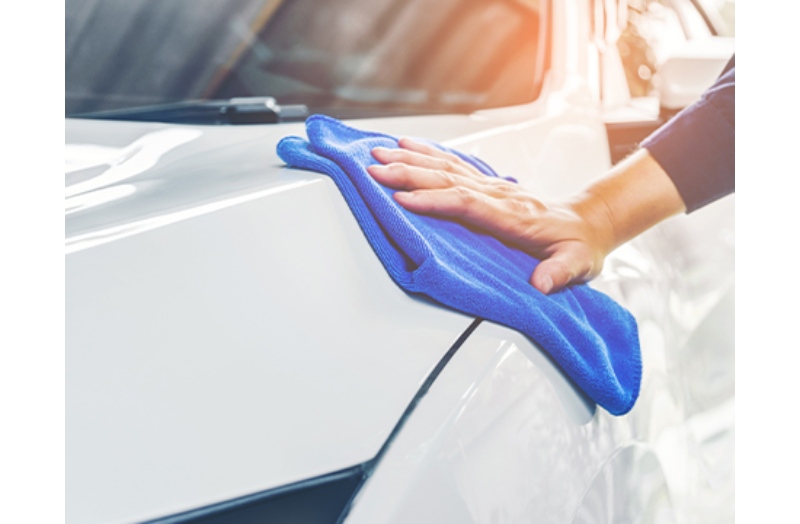Tech
How Temperature Affects the Dent Repair Process?

Winter makes all aspects of driving more complex, including auto body repair. Find out how temperature affects the dent repair process and what technicians can do about it.
It’s officially winter now—brr! Anyone who lives somewhere with cold, or even cool, winters knows that winter driving is different. Icy roads can cause you to swerve, snowy skies reduce visibility, salted roads can increase oxidation and rust, and frigid temperatures can zap your battery of its strength. It can be a real hassle even for the most avid winter-lovers out there.
But winter’s effects on our vehicles aren’t limited to the issues above. Cold temperatures affect our vehicles in many more, often overlooked ways. For example, have you ever considered how temperature affects dent repair?
Tire changeovers, battery checkups, and…dent repair?
Many of us lead busy lives and the last ten weeks of the year are often busiest. There’s Halloween, Hanukkah, Christmas, Kwanzaa, and New Year’s Eve. For parents, there are school concerts, hockey practices, and report cards to mull over. For students, there are tests, essays, and exams. For owners of houses, there are eavestroughs to clean, yard work to do, and maybe even driveways to shovel.
When you add in seeing friends and family and work parties or functions, it can all be overwhelming. Maybe that’s why so many of us neglect doing proper winter prep for our vehicles. Do we switch to winter-specific windshield fluid? Do we visit an auto body repair shop for a tune-up and battery checkup? Do we switch our tires?
By now, we all know we should drive on winter or all-weather tires when it gets cold, yet how many of us actually do? Ten years ago, the answer would have been, “Not that many”. But in recent years, we’re seeing changes in the right direction. About 76% of Canadian drivers now use tires rated for winter driving during winter.
This is great because it keeps people safer. By reducing the probability of collisions, it also makes dent repair less likely. And that’s good, because dent repair in winter can be tricky.
Winter dent repair
Winter makes automobile dent repair more difficult. This is due to the effects of cold temperatures on metal, plastic, and paint. When it’s cold, metal becomes less malleable and more rigid, making it harder to reshape without risking cracks or fractures in the surface.
Think of it like spaghetti: After you boil it, spaghetti is flexible or, if you will, al dente. But before you cook it, spaghetti is brittle; you can’t bend it, only snap it.
Metal should never be al dente, but it’s not great to be cold and brittle, either. And plastic is similar. For components such as bumpers, low temperatures make them less able to bend and adapt to impacts. This increases the probability of stress marks or breaks during dent repair.
Automotive paint also suffers in winter. Cold temperatures can cause paint to chip or flake more easily when someone, such as a collision repair technician, or something, such as another vehicle crashing into it, applies pressure to the area. Furthermore, adhesives that technicians use in some dent repair techniques are less effective in colder weather, because they struggle to bond properly to icy or chilled surfaces. If you’ve ever tried to paint a porch in chilly temperatures, you know it doesn’t work out great.
Cold weather dent repair techniques
Winter conditions also complicate temperature-dependent repair methods, such as thermal expansion and contraction. To accomplish this type of dent repair, technicians use rapid heating and cooling to pop dents out.
If the surrounding air is too cold, the heat often dissipates too quickly and the technicians cannot perform the dent repair properly. If an auto body repair shop doesn’t have a heated garage where its techs can perform dent repair, the process becomes highly difficult and time-consuming.
To prevent these issues, collision repair technicians can work in temperature-controlled facilities and use specialized tools to create better conditions for auto body repair. The right tools are essential to prevent further damage to the vehicle’s body during cold weather dent repair.
Winter and collision repair
So, winter can make dent repair harder. But winter also increases the need for collision repair. It’s harder to control a vehicle on icy, snowy, or wet roads. This makes the likelihood of colliding into something higher. Drivers can and should compensate for this by driving more carefully, but weather still plays a role in a large number of collisions.
There’s one other factor to consider regarding the correlation between temperature and dent repair. Cold weather-induced collisions aren’t the only winter-related cause of dents. There’s also hail.
Hail can fall hard and fast. A hailstone the size of a golf ball is not particularly rare and it can do some serious damage. Hail can definitely necessitate a dent repair, an automotive paint touchup, and automotive glass repair.
The right winter auto body repair shop
Winter can be hard on us and our vehicles. Even if you switch to all-weather or winter tires, drive carefully, and bring your vehicle in for a checkup before the snow falls, you might still need dent repair come January. Maybe it’s because of a hailstone or due to another driver sliding all over the road on all-season tires, but when you need dent repair or any type of collision repair, you want to make sure you visit an auto body repair shop that can handle the winter-related issue you have.
-

 Business3 weeks ago
Business3 weeks agoPrakash and Kamal Hinduja: Driving Social and Environmental Change
-
Education4 weeks ago
Fred DuVal: University Leadership as a Critical Resource for Climate Change Research and Life-Saving Solutions
-

 Cryptocurrency3 weeks ago
Cryptocurrency3 weeks agoDesigned For The Masses: How Akasha (AK1111) Is Unlocking Crypto For The Next Billion Users
-

 Health3 weeks ago
Health3 weeks agoThe Hinduja Brothers Commitment to Global Health: Empowering Communities Across Borders
-

 Cryptocurrency4 weeks ago
Cryptocurrency4 weeks agoNexaglobal & Future World Token (FWT): Could This Be the Next Big Crypto Investment of 2025?
-

 Startup2 weeks ago
Startup2 weeks agoCost-Saving Strategies Every Small Business Owner Should Know to Boost Efficiency
-

 Startup3 weeks ago
Startup3 weeks agoMatthew Denegre on the Art of Deal Sourcing: Finding the Right Investment Opportunities
-

 Health2 weeks ago
Health2 weeks agoSt. John’s Community Health Examines Innovations in Pharmacy Access













